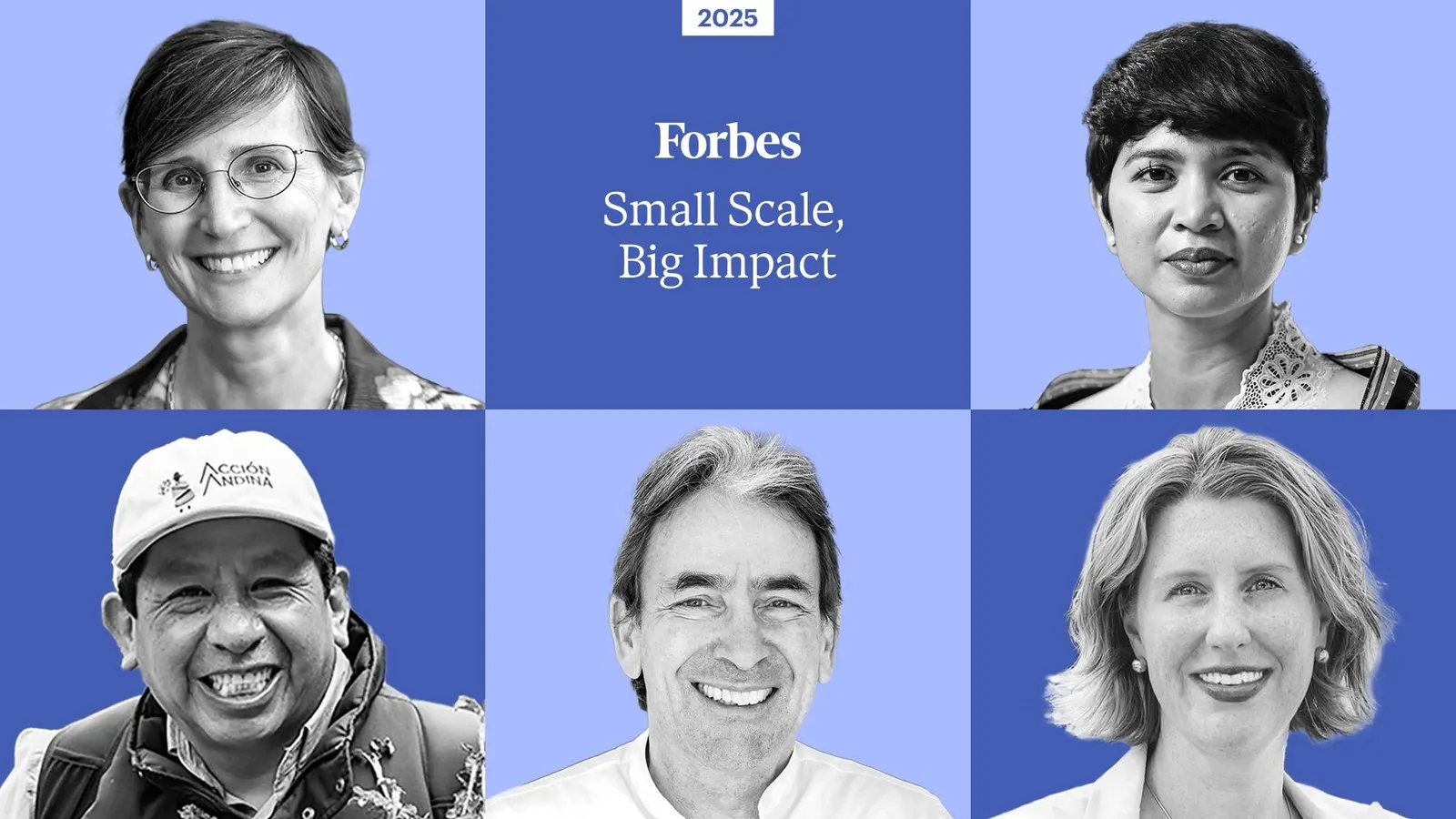By Abby Metzger,Contributor,Eduardo Garcia
Copyright forbes

These five individuals are focused on climate-related impact in their local communities, from the cloud forests of the Andes to the deserts of Egypt.
Solving the climate crisis and ensuring a livable planet for future generations is a colossal task that requires an all-hands-on-board effort. For a second year running, the Forbes Sustainability Leaders List highlights a comprehensive selection of climate tech entrepreneurs, policymakers and renewable energy executives with a tangible global impact. But rather than focusing on global solutions, many academics, activists and nonprofit leaders have prioritized making their local communities more sustainable and resilient. Our cohort of local leaders may have a smaller footprint, but they have successfully deployed smart solutions to protect wildlife, decarbonize education, green-up urban environments, empower sustainable farmers and restore vulnerable ecosystems.
Duke University
Toddi Steelman
Vice President and Vice Provost for Climate and Sustainability, Duke University, United States
In her two years as Duke’s sustainability chief, Dr. Toddi Steelman helped the university reach 100% carbon neutrality in 2024. This effort included a $73 million overhaul of energy systems, making Duke one of the largest U.S. research universities to meet its climate pledge. Steelman, whose research on firefighting has informed U.S. disaster policy, also launched the Duke Climate Commitment, a university-wide initiative that bolsters climate research, works toward campus decarbonization and partners with local communities on sustainability programs. Under her leadership, Duke has offered more than 330 climate-related courses in 2024 and awarded $3.7 million in seed grants for climate-focused research projects. “As universities, we are embedded in the community,” Steelman told Forbes. “We need to be speaking truth to power when it comes to scientific evidence for the challenges that we’ll face.”
Nanang Sudjana
Farwiza Farhan
Cofounder and Executive Director, Forest, Nature and Environment Aceh Foundation (HAkA Foundation), Indonesia
Grassroots activist Farwiza Farhan leads the Forest, Nature and Environment Aceh Foundation (HAkA) to protect Indonesia’s threatened Leuser ecosystem, the last place on Earth where critically endangered animals — orangutans, tigers, elephants and rhinos — coexist in the wild despite deforestation and poaching. Farhan’s Wildlife Protection Team dismantles snares and aims to fast-track prosecution for wildlife crimes by using satellite-based forest monitoring and community-led patrol groups. In 2023, HAkA launched a public online portal, Digdata Dashboard, that tracks forest loss and illegal wildlife trade. The organization also fights in court, including a lawsuit against an oil palm company that resulted in a $26 million fine. Having seen entire ecosystems disappear as a biologist, her mission is not just to conserve forests, she says, but to shift power—to communities, to women, to youth and to the forest itself.
Abby Metzger
Constantino Aucca Chutas
Cofounder and President, Acción Andina / Asociación de Ecosistemas Andinos (ECOAN), Peru
Constantino Aucca Chutas says that restoring Andean forests would not be possible without the stewardship of Indigenous communities that have populated these ecosystems for millennia. As of this year, Acción Andina has restored roughly 5,000 hectares of fragile mountain forests with more than 12 million native and endangered trees – mainly of Polylepis, a genus of 28 shrub and tree species that thrives in the thin air of the Andes by capturing moisture from clouds and fog. These “cloud trees” once extended from Venezuela to Patagonia. “Quechuas, Coyas, Aymaras, Gauchos… All the Indigenous groups we work with take care of these trees because they understand that a single tree unites them,” Aucca Chutas told Forbes. Acción Andina has involved roughly 40,000 local stewards who run tree nurseries, join tree-planting brigades and protect trees from livestock and wildfires. The project also supports community initiatives such as educational and literacy programs.
Samuel Knaus
Helmy Abouleish
CEO, SEKEM, Egypt
Helmy Abouleish leads Sekem, an Egyptian nonprofit that helps farmers switch to sustainable agriculture to combat desertification and build more resilient food systems. Sekem has helped 30,000 smallholder farmers adopt sustainable agriculture principles, such as crop rotation, that improve water retention, helping protect the soil for future generations. The program planted over one million trees in 2024, produced 100,000 tons of organic compost to fertilize cropland and generated carbon credits that have created a new revenue stream for farmers. Through its Greening the Desert program, Sekem has installed 11 solar-powered irrigation systems that have helped sustainable farmers reclaim 725 hectares of desert land. Abouleish told Forbes that his ultimate goal is to help create “a world where business regenerates nature.”
The New York Botanical Garden/Marlon Co.
Jennifer Bernstein
CEO and The William C. Steere Sr. President, The New York Botanical Garden, United States
In her role as CEO and president of The New York Botanical Garden (NYBG), Jennifer Bernstein created a Climate Resilience Advisory Group with Botanic Garden Conservation International last year to identify how plants can act as climate solutions: by mitigating floods, fortifying coastlines, improving food security and ensuring the survival of critical pollinators. This year, she enacted watershed restoration programs in the Bronx, where NYBG is located. Under her leadership, the NYBG’s research team has expanded to 81 projects across 79 countries to conserve disappearing plant species, restore degraded ecosystems, and breed crops to withstand drought, sea level rise and extreme heat under climate change. As the host of the NYBG’s new podcast, “Plant People,” which launched in 2024 and is in its second season, Bernstein speaks with scientists, curators and other experts to communicate why plants are crucial to people and the environment.
More From Forbes
Editorial StandardsReprints & Permissions



